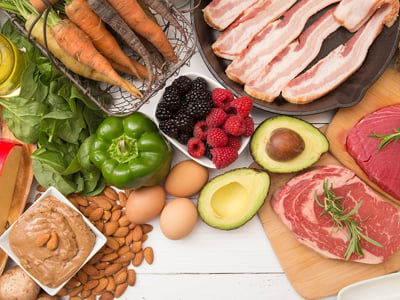- Doctors & Departments
-
Conditions & Advice
- Overview
- Conditions and Symptoms
- Symptom Checker
- Parent Resources
- The Connection Journey
- Calm A Crying Baby
- Sports Articles
- Dosage Tables
- Baby Guide
-
Your Visit
- Overview
- Prepare for Your Visit
- Your Overnight Stay
- Send a Cheer Card
- Family and Patient Resources
- Patient Cost Estimate
- Insurance and Financial Resources
- Online Bill Pay
- Medical Records
- Policies and Procedures
- We Ask Because We Care
Click to find the locations nearest youFind locations by region
See all locations -
Community
- Overview
- Addressing the Youth Mental Health Crisis
- Calendar of Events
- Child Health Advocacy
- Community Health
- Community Partners
- Corporate Relations
- Global Health
- Patient Advocacy
- Patient Stories
- Pediatric Affiliations
- Support Children’s Colorado
- Specialty Outreach Clinics
Your Support Matters
Upcoming Events
Colorado Hospitals Substance Exposed Newborn Quality Improvement Collaborative CHoSEN Conference (Hybrid)
Monday, April 29, 2024The CHoSEN Collaborative is an effort to increase consistency in...
-
Research & Innovation
- Overview
- Pediatric Clinical Trials
- Q: Pediatric Health Advances
- Discoveries and Milestones
- Training and Internships
- Academic Affiliation
- Investigator Resources
- Funding Opportunities
- Center For Innovation
- Support Our Research
- Research Areas

It starts with a Q:
For the latest cutting-edge research, innovative collaborations and remarkable discoveries in child health, read stories from across all our areas of study in Q: Advances and Answers in Pediatric Health.


Fruit and Vegetable Servings for Children

As a parent, you likely know that fruit and vegetables are full of dense nutrients that are good for your child. These nutrients can boost your child’s athletic performance and help them in many other ways, from building new bone and tissues to maintaining focus in the classroom. But what do you do when you’re having a hard time getting your child to eat enough servings of fruit and vegetables? The answer: Get creative. Our nutrition experts offer several ideas that may help.
The right amount of fruit and vegetables
Eating fruit and vegetables every day can help your child stay active and strong. The amount they need changes as they get older, and you can use the USDA recommendations as a guide. Remember, these are minimum amounts for active kids. If your child wants more, that’s a good thing. It’s OK for them to have more. If your child isn’t eating the recommended amount, start with small habit changes. For example, work up to one fruit serving every day, then start on the second serving. Studies show the most effective way to change long-term behavior is to change one habit at a time.
How many servings of fruit per day for children?
Young children
- Age 2 to 3: 1 cup
- Age 4 to 8: 1 to 1 ½ cups
Girls
- Age 9 to 18: 1 ½ cups
Boys
- Age 9 to 13: 1 ½ cups
- Age 14 to 18: 2 cups
How many servings of vegetables per day for children?
Young children
- Age 2 to 3: 1 cup
- Age 4 to 8: 1 ½ cups
Girls
- Age 9 to 13: 2 cups
- Age 14 to 18: 2 ½ cup
Boys
- Age 9 to 13: 2 ½ cups
- Age 14 to 18: 3 cups
Fruit and vegetables and their impact on athletic performance
Phytochemicals are unique chemicals found in plants that research has shown can benefit our health. For instance, the phytochemicals in fruit and vegetables can have a positive impact on performance when athletes are eating them daily and right before their workouts. If athletes aren’t eating enough fruit and vegetables, they might be low in nutrients that help with metabolism and recovery.
How to get your kid to eat fruit and vegetables
Now that you know how much fruit and vegetables to give your kids, and why they should eat them, how do you make it happen? The tips below from our nutrition experts can help everyone eat more fruit and vegetables — kids and adults alike.
Be specific about the benefits
A food being “good for you” doesn’t mean much and isn’t very motivating for kids and teens. So find out what’s most important to them. Running fast on the playground? Being strong and avoiding injuries in football? Having a sharp mind for their favorite activities? Give them specific examples of changes they’ll see when they eat their daily serving of fruit and vegetables.
Or better yet, don’t acknowledge the benefits at all if you don’t have to. By not making a big deal about how important a daily serving of vegetables and fruit is, it normalizes that they are just a part of what we eat.
Find ways to work them in
Active kids tend to be hungrier, so it might not be that your child doesn’t want to eat fruit and vegetables. Instead, fruit and vegetables by themselves might not be satisfying, and your child might not feel full when they eat them. Finding creative ways to work them into a meal can help.
Add a can of pureed pumpkin to your chili recipe to boost fiber, beta carotene, lutein and zeaxanthin.
Make turkey meatloaf (see recipe below). Add in pureed onion, which is high in sulfides and can help fight bacteria. And add mushrooms, which are rich in vitamin D, quercetin and selenium.
Add spinach leaves, which are rich in lutein and beta carotene, to hot pasta so they wilt and become part of the sauce.
Make smoothies with spinach in them and come up with a green-themed name your child might like (such as a green character from a popular movie, TV show or book).
Try different forms of the same veggie to see what your family likes best (such as roasted carrots, raw baby carrots, shredded carrots, carrot soup, etc.)
Be a role model
Let’s face it, your kids watch everything you do. That means they’re also watching what you eat. In fact, the largest influence on what kids eat is what their parents eat. If you’re not eating fruit and vegetables, your kids are going to see it as a punishment. It’s the old idea, “You don’t have to, so why do I?” Try new, quick and easy ideas to find what works best for your family.
Be patient
Maybe you’re already a big fruit and vegetable eater, and that’s great. Which means it can also be frustrating when you feel like your child isn’t following suit. Remember, it can take exposing your child to foods many times before they actually decide to eat them. Continue to get creative and stay consistent with having fruit and vegetables at every meal.
Try putting apples, oranges and bananas in a fruit basket on the table. And always include the vegetable serving on their dinner plate, but don’t force them to eat it. You may see them leave it on their plate 50 times, but don’t change what you’re doing. The more exposure you provide and the more they see you eating it, the more likely it is that they will eat it.
Take them shopping
Taking your kids on short grocery store trips can be a great way to get them thinking about and engaged in what they eat. Once a week, let your child pick out a new fruit or vegetable to try. Tell them they can pick anything, and they have to pick something. Even if they grab carrots the first six times you do this, you can get creative with your new carrot recipes to help them see how different a single food can taste based on how you cook it and what you add to it.
Eventually, you can let them pick a recipe that includes the food. Then, let your kids help cook the food. Allowing them to participate in the decision-making process can get them excited about the food.
Remember, don’t give up. Keep using these tips, add in some ideas of your own and stay consistent. If you’re doing these things, you’re likely to raise a healthy eater — even if it doesn’t feel that way right away.
Turkey meatloaf recipe
Ingredients
1 pound of lean ground turkey (93% lean / 7% fat)
1 cup onion, finely diced or pureed
1 cup mushrooms, finely diced or pureed
Salt/pepper to taste (dash of each)
½ cup dry old-fashioned oats
½ cup milk
1 Tbsp apple cider vinegar
1 tsp Worcestershire sauce
1 Tbsp whole grain mustard
Directions
Preheat oven to 325F. Combine all ingredients in a large bowl until well mixed. On a sheet pan, mold a loaf out of the turkey mixture. It’s best to line the pan with aluminum foil and spray the foil with non-stick spray. Bake the meatloaf for 45 minutes or until the center of the loaf reaches 165F.
Makes 4 to 5 servings



 720-777-0123
720-777-0123






